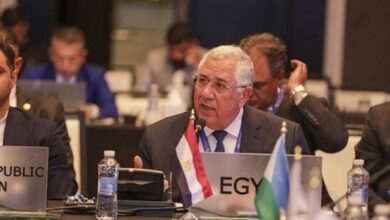Saudi Crown Prince Sultan bin Abdulaziz, who died on Saturday, was a central figure in the world's top oil exporter who dominated defence policy and was long seen as a future king.
A defence minister for almost half a century before becoming crown prince to King Abdullah in 2005, Sultan's powerbase lay in his control of the regular armed forces and his status as one of seven full brothers born to the kingdom's founder King Abdulaziz Ibn Saud by his favourite wife.
He oversaw a defence spending spree which made the kingdom one of the world's biggest arms buyers.
Sultan's death may put in motion for the first time an "allegiance council" consisting of sons and grandsons of the kingdom's founder. The council was set up by his half-brother, King Abdullah, to vote on future kings and their heirs.
Prince Sultan, who was born in the mid-1920s, had an intestinal cyst removed in 2005 and had spent several months abroad for treatment and recreation.
While Saudi Arabia insisted he was fully cured, diplomats in Riyadh said he gradually retreated from participating in decision-making and often worked only for one or two hours a day.
Many of his duties had been informally shifted to other princes, most notably to his son Khaled who led Saudi and Arab forces during the 1991 war to remove Saddam Hussein's Iraqi army from Kuwait. Prince Khaled, who is assistant defence minister, is also the owner of influential pan-Arab daily al-Hayat.
While defence minister, Sultan spent hundreds of billions to modernise the forces of the country where Islam was born 1400 years ago, doubling the regular armed forces to more than 100,000 men and buying advanced weapons from all over the world.
Saudi Arabia has been one of the world's biggest arms buyers over the last decades and returned in recent years to its big spending ways as strong oil income filled state coffers.
Western leaders have regularly courted top members of the huge Saudi royal family, Prince Sultan in particular, to promote their hardware and secure jobs back home.
In September 2010, US officials said they expected a Saudi arms order worth up to $60 billion.
Minister in First Cabinet
Sultan was one of a group of ambitious younger princes groomed for high office at an early age.
In 1947 Sultan's father King Abdulaziz, who conquered most of the Arabian peninsula and established the kingdom of Saudi Arabia, appointed him governor of the capital Riyadh, a key post now held by his younger brother Prince Salman.
He was appointed agriculture minister in the kingdom's first cabinet in 1953 and was made communications minister two years later. In 1962 he was made minister of defence and aviation, a post he has held for nearly five decades.
He had six full brothers, including King Fahd and Prince Nayef, Sultan's likely successor as crown prince.
When his elder brother Fahd became king in 1982, half-brother Abdullah was named his heir. Sultan became second deputy prime minister and thus front runner to become crown prince after Fahd's death.
Born in Riyadh, Sultan was educated by private tutors and spoke some English. He also went to a school for princes.
He was keen to maintain close ties with the West, especially the US, though like the rest of the royal family he distanced himself from the US-led attack on Iraq in 2003.
Diplomats said he and his full-brothers resisted some of the reforms Abdullah wanted to enact following the Sept. 11 attacks of 2001, which brought unwelcome international attention to Saudi Arabia since most of the attackers were Saudi.
Of his seven sons, Bandar was ambassador to the US from 1983 to 2005. Prince Bandar had striven to smooth tensions in the strategic alliance that surfaced after the September 11 attacks.
Sultan often travelled across Saudi Arabia to address his soldiers, promising them advanced equipment and assuring them their leaders abided strictly by the Koran and Islamic tradition.
He was chairman of the national carrier, Saudi Arabian Airlines (Saudia), since 1965.




